Unlocking the Power of Salesforce CMS: A Comprehensive Guide
Salesforce CMS is a hybrid Content Management System. It was announced in Dreamforce ’19 and is generally available from Winter ’20. You can create and manage content from a single location, then use that in multiple places. It allows you to share content across communities, create content on a Community-by-community basis, and assign access roles to users to control who creates the content. It is available in both Lightning and Visualforce + Tabs Communities.
What Is Salesforce CMS?
Salesforce CMS refers to the content management system used by Salesforce products. As a central repository for your organization, Salesforce CMS is used to store and retrieve documents, photographs, videos, knowledge articles, and more. Any assets maintained in Salesforce CMS can be accessed by numerous user groups, regardless of which cloud product they are using. The Salesforce CMS app is part of the Salesforce Lightning Experience. It is now embedded at many points in the Salesforce user experience, particularly its role in the Lightning Content Builder
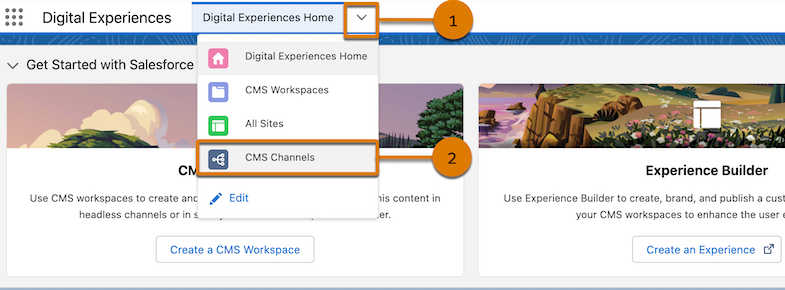
Key Features Of Salesforce CMS:-
1. Robust And Simple:– Any user can create, manage, and deliver content with Salesforce CMS. You can choose from various content types or develop your own & quickly generate content in the app with no technical knowledge required. In addition, scalability is aided by multilingual and translation capabilities, and permissions allow you to contribute while maintaining brand standards. With the help of Salesforce CMS, content creators can also create content collections, essentially playlists of content included in various experiences.
2. Flexible And Fast:– Salesforce CMS is a hybrid content management system, which means your team can generate content in one place and syndicate it to any digital touchpoint, whether Salesforce-powered or not.
If you wish to add content to an experience produced with Salesforce, your users can choose from two tools: Salesforce Experience Builder and Commerce Page Designer. They can help you create an experience declaratively by dragging and dropping content components onto a website, portal, forum, or e-commerce storefront. These technologies are developer-friendly, and ideal if your design and development teams want to use code to create the experience. Furthermore, Salesforce CMS’s headless APIs make it easy to distribute content to a third-party site, experience, or mobile app.
3. Customer-Centric:– Customers expect personalized and connected content when they visit your digital properties. Customer needs, queries, and wishes should be addressed in every piece of content. Instead of developing content on the fly, teams can start the process with customer data as a starting point.
How To Get Started With Salesforce CMS?
Salesforce CMS allows you to organize and manage your material in one location. One can determine who sees and does what by assigning contributors roles. With the help of this platform, you can distribute your content with B2C, B2B, Marketing Cloud, or Lightning Experience apps. The Salesforce CMS app can be used to disseminate content on Experience Builder sites, while the Connect REST API may be used on Salesforce Tabs + Visualforce sites.
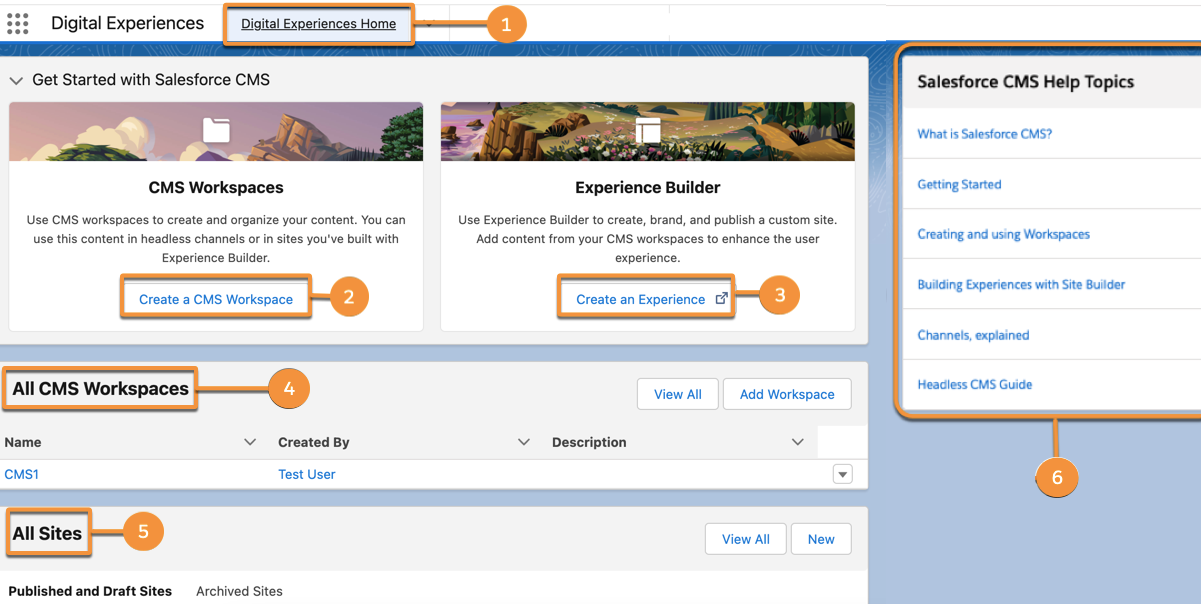
- Shared Content: The content created in the Salesforce CMS app and shared to the site you’re working on is referred to as shared content. You may either publish individual content items or arrange them into collections based on search parameters or subjects.
- Salesforce CRM: It allows you to access Salesforce objects like accounts and product items. You can select which objects you want to share. In addition, permissions connected with your objects, such as org and object permissions, can be applied.
- CMS Connect: This allows you to reuse HTML and JSON feeds from an external CMS source, such as blog posts, common headers, or photos, without duplicating them into your Experience Builder Site. One can use collections and topics to organize and expose content in the most appropriate way easily.
- Collections: It allows you to establish rules to build static or dynamic lists of content or Salesforce CRM items. One can use collections as a content source in Experience Builder to keep their pages up to date without manually updating individual pieces of material.
- Topics: It can be used to group and sort for presentations, and add subjects to your CMS content. When your clients are surfing your websites, make it easy for them to find relevant material.
Different Usages Of Salesforce CMS:-
Salesforce CMS Home:
From CMS home, you can access everything CMS has to offer. To go to CMS channels, workspaces, and experiences, use the navigation tab. From the home page, you can see or create CMS Workspaces and CMS Experiences. Without leaving the Salesforce CMS, you may get valuable connections to significant Salesforce CMS resources.
CMS Workspaces:
The Salesforce CMS app’s key organizational and security principle is CMS workspaces. Each CMS workspace has more than one channel, each of which shares material authored by one or more workspace contributors. To distinguish internal and external information, various locations, or even different campaigns, create CMS workspaces. It also aids in limiting content access.
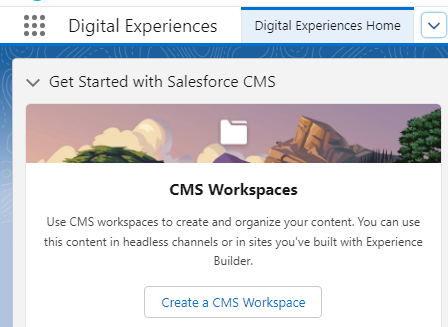
Create Content in Salesforce CMS:-
In every CMS workspace, you can create content with just a few clicks. All channels in a Salesforce CMS workspace receive content published in the Salesforce CMS app.
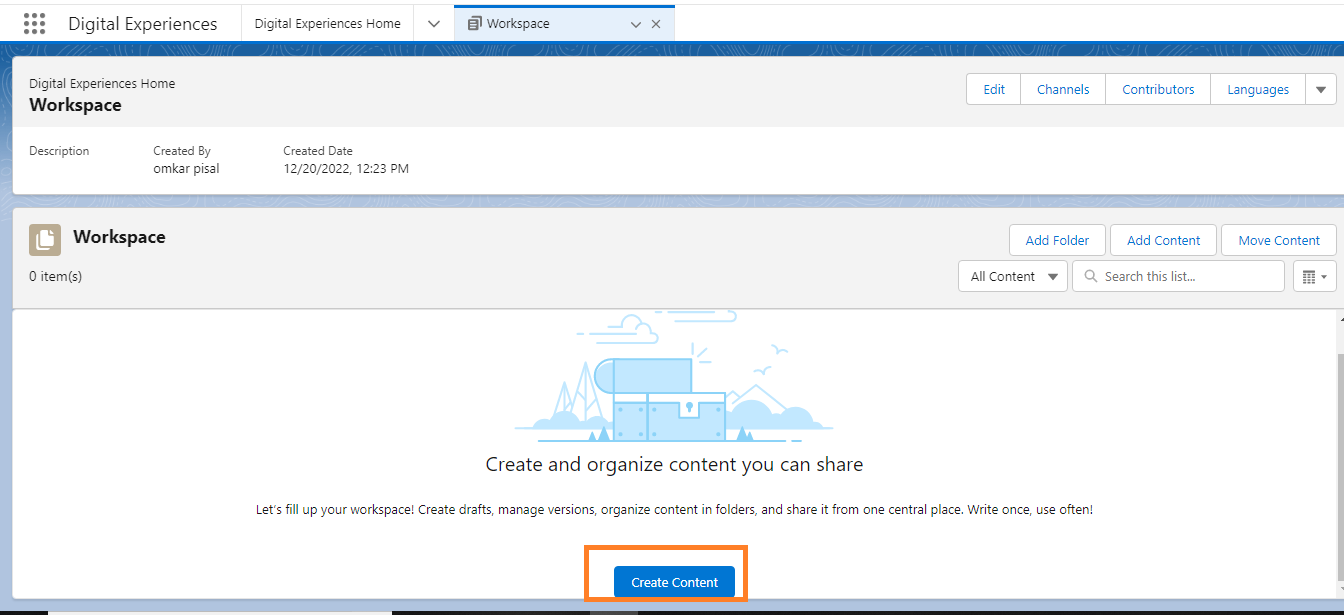
Create Publication Schedules in Salesforce CMS:-
Create publishing and unpublishing schedules for your Salesforce CMS material, then publish auto-unpublish in a single process.
CMS Content Types:-
Salesforce CMS is available with customizable content types for documents, images, and news. These material forms are ready to be used, but you probably have more suggestions. You may quickly generate material out of standard content kinds with the Managed Content-API and make it available in the Salesforce CMS app for your users. Share your material on several platforms and add published content to your Experience Cloud layouts.

Create a Detail Page:-
You require a CMS content page created to hold your specific content type for published content on the website of Experience Builder.
Salesforce CMS Content Key:-
You may keep your content consistent with the Salesforce CMS content key. It sticks to your content regardless of the version org, sites, and components in Salesforce. This unique identification.
Translate Salesforce CMS Content:-
You can offer your material translated into numerous languages to fulfil the global demands of your company. First, set up multi-language workspaces. Then, manage the text, from draft to publication, through the translation lifecycle
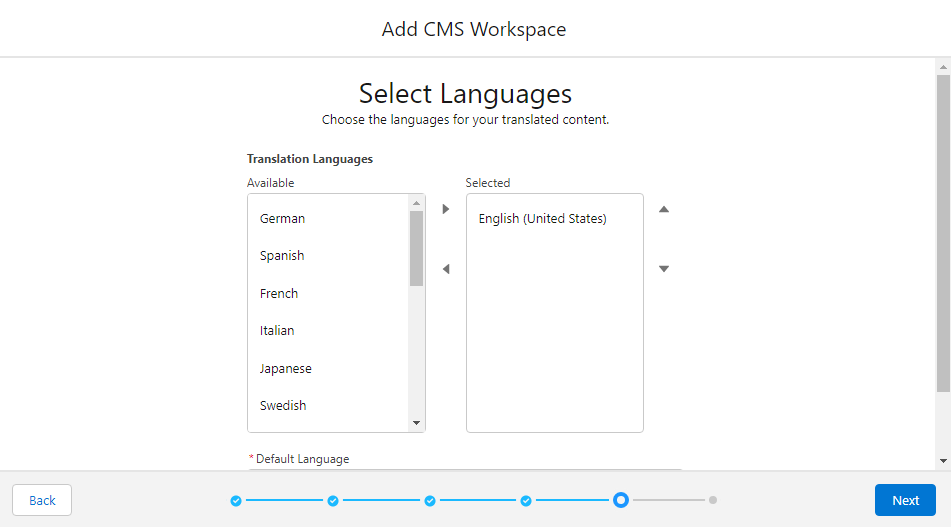
Import and Export Content with Salesforce CMS:-
Learn how the content can be added to CMS from Salesforce or sent by importing and exporting functionality from one org to another. Also, learn more about certain common usage scenarios about formatting and
processing text.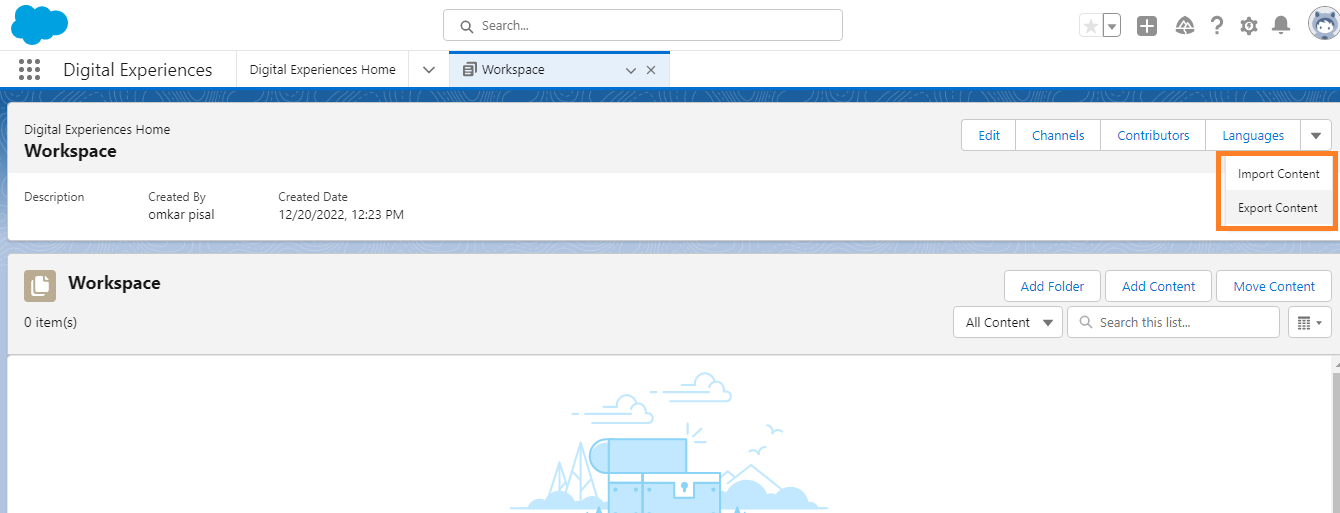
Organize Content with Folders in Salesforce CMS:-
Create and update folders in your Salesforce CMS workspace to quickly manage your content.
Organize Content with Collections and Topics in Salesforce CMS
In the Content Management module for Experience Workspaces, Salesforce CMS offers collections and topics. Themes and collections help gather your content and organize for easy usage and automatically maintain the most recent content up to date on your Experience Cloud sites. Collections and themes are unique to each site and can be used for different audiences in different ways.

CMS Channels in Salesforce CMS:-
CMS channels let you share material with other endpoints in your CMS workplaces. Use headless APIs to construct channels to connect to the Commerce Cloud, Marketing Cloud, Heroku, LEX applications, and any other website. You can also use the Experience Builder to design a one-of-a-kind site.

Add Content to an Experience Builder Site:-
You are ready to add content to your Experience Builder website once you have created material to enable your clients to see it.

Conclusion :
Salesforce CMS allows you to organize and manage your material in one location. One can determine who sees and does what by assigning contributors roles. With the help of this platform, you can distribute your content with B2C, B2B, Marketing Cloud, or Lightning Experience apps. The Salesforce CMS app can be used to disseminate content on Experience Builder sites, while the Connect REST API may be used on Salesforce Tabs + Visualforce sites.
